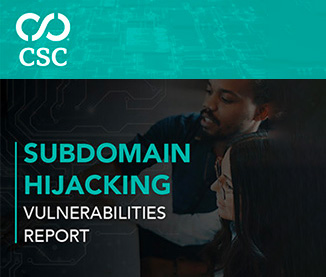

Brand Protection |
Sponsored by |

|



Thousands of trademark infringement cases get heard every year -- some of which are more unexpected than others. For instance, let's take a look at one that originates in the world of fiction. Like SpongeBob himself and Patrick, the Krusty Krab has been a centerpiece in the "SpongeBob SquarePants" cartoon series and movies.
Following our initial blog on the subject of Internet sites and domains seeking to profit from the ongoing COVID-19 health crisis, we dug deeper into the topic. Appdetex looked at keywords within domain names, website content, social media handles and marketplace listings that would likely be related to the coronavirus outbreak. Though the result of this work is related to a very limited set of keywords, the quantities of results delivered are statistically significant in many cases.
Typosquatting is a malicious tactic that cyberattackers employ to entrap users who mistype web addresses on their browsers. Often, mistyped domain addresses redirect to copycats of legitimate sites and are owned by threat actors.
The Telephone Consumer Protection Act (TCPA) is a federal statute that restricts telemarketers from making automated and unsolicited calls as well as sending faxes and messages to people. Affected individuals may choose to file a complaint and collect a minimum of US$500 for each illegal communication received.
Most businesses know the importance of protecting a brand. But, only a few of them understand that protecting their online properties is just as central to their brand-protection strategies.
The more popular a brand is, the more customers buy its products. That same popularity makes it a lucrative target for infringers to sell counterfeits. As such, it has become a must for global brands to use brand protection software to make sure their reputation and consumers do not suffer.
Gone are the days when a single department in an organization shouldered the responsibility for a company's brand protection strategy. A research paper that discussed the future of online brand protection shows that inter-department involvement, starting with the board's approval and support, down to the implementation of the strategy by different departments, is required.
Earlier today, GoDaddy announced an agreement to acquire Brandsight. To say that we are thrilled would be an understatement – we couldn't be happier about it. Over the past three years, the Brandsight team has leveraged today's technology along with deep industry experience to build next-generation corporate domain management solutions that are redefining the market.
Over the past five years, the Internet has seen the mass migration of websites from HyperText Transfer Protocol (HTTP) to its extension, HTTP Secure (HTTPS). HTTPS is a communication protocol that encrypts the data exchanged between sites and user agents.
Sometimes, seeing several permutations of a famous company's domain names is not just a mere coincidence. Often, these are typosquatting attempts. They are not merely a nuisance, either, because clicking such a URL can have severe effects.